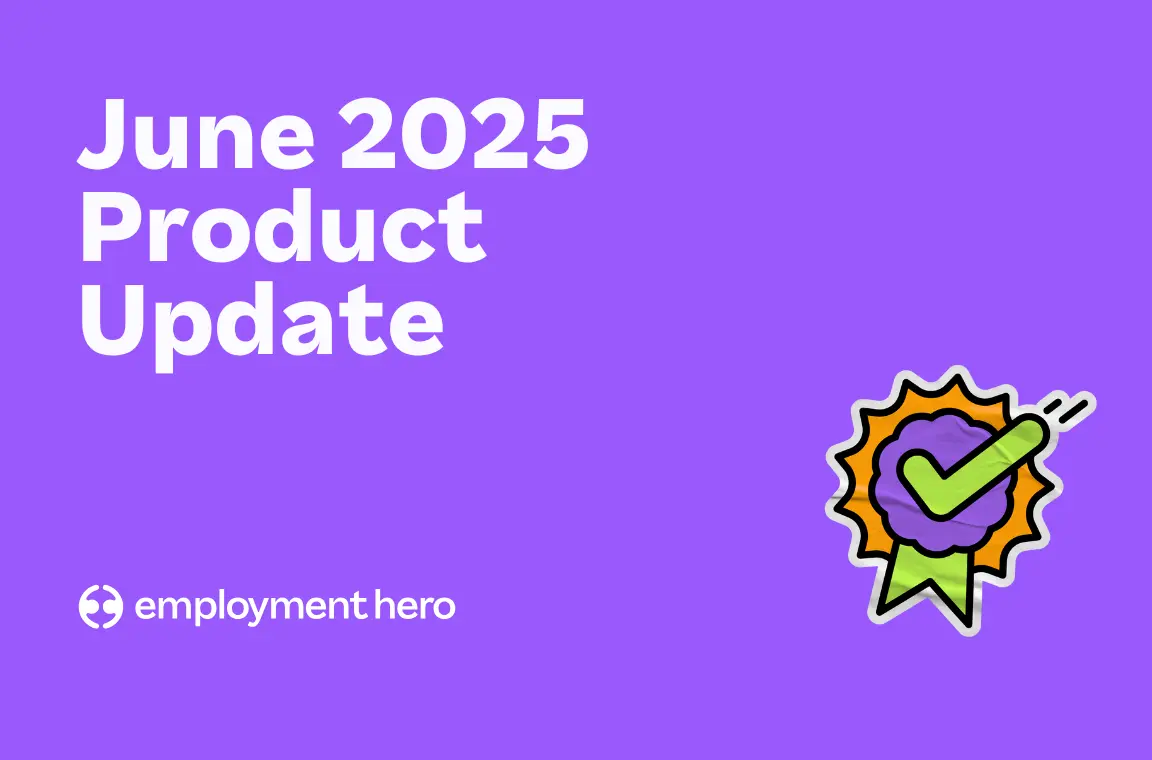Forecasting and future-proofing for your accounting, bookkeeping and outsourced payroll firm
Ready to embrace tomorrow’s payroll? Forecasting and future-proofing are your new best tools.

Contents
In the ever-evolving world of business, staying ahead of the curve is not just a nice-to-have – it’s essential, especially as an accounting, bookkeeping and outsourced payroll firm. That’s why in today’s competitive landscape where change is constant and the risk of recession looms on the horizon, the ability to forecast and future-proof has become paramount. Forecasting and future-proofing are powerful tools that enable us to make informed decisions, mitigate risks, and seize opportunities. By understanding market trends, anticipating changes, and adapting our strategies, we can navigate uncertainties with confidence and guide our clients towards sustainable growth. In this post, we’ll explore how forecasting and future-proofing can be put to good practice by accounting, bookkeeping and outsourced payroll firms. These insights can help you strategically grow your businesses and become trusted partners for your clients, helping them navigate financial challenges, optimise costs, and leverage their human resources. For a deeper dive into the top strategies for future-proofing your accounting practice, check out our comprehensive guide here. We’ll also explore tech tools and integrations like Employment Hero Payroll, and how that can enhance your capabilities and expand your service offerings.
The ins and outs of forecasting and future-proofing
Forecasting and future-proofing are two essential practices that allow businesses to anticipate and adapt to changes in their operating environment. By gaining insights into the future, you can make well-informed decisions, allocate resources effectively, and meet upcoming challenges and opportunities head-on.
What is forecasting?
Forecasting is the process of estimating future outcomes based on historical data, current trends, and relevant factors. It involves analysing patterns, identifying trends, and projecting future scenarios to guide decision-making. The primary purpose of forecasting is to reduce uncertainty and enable proactive planning.
What is future-proofing?
If forecasting is about ‘predicting the future’, then future-proofing is what you do with those predictions. It’s the process of adopting strategies and measures to prepare businesses for anticipated future changes. This involves identifying potential disruptions, assessing their impact, and implementing proactive measures to mitigate risks and leverage opportunities with the goal to ensure long-term viability and resilience. Discover how cloud payroll solutions can support your accounting firm in streamlining payroll processes and future-proofing your practice here.

Key benefits of forecasting and future-proofing in an uncertain economy
When we say ‘predicting the future’, let’s not get carried away. Forecasting aims to estimate future outcomes based on available data, trends, and analysis. While it can’t predict the future with certainty, it allows you to make educated guesses about what might happen. However, forecasts can be influenced by uncertainties and external factors like policy changes, market disruptions, or natural disasters. That’s why forecasting should be seen as a tool to guide decision-making rather than a guaranteed prediction. Forecasting helps you anticipate potential scenarios, make informed choices, and adapt strategies. By identifying market trends, consumer behaviour shifts, and technological advancements, you can position your business and seize growth opportunities. During times of economic uncertainty, forecasting becomes even more critical. It provides insights into market dynamics, customer behaviour, and industry trends, enabling informed decisions about where products, the market, and pricing are heading. Using these insights, effectively future-proofing your business, you can stay agile, anticipate recession impacts and develop strategies to adapt products, services, and operations accordingly. This is all about seeing what’s coming and being responsive, rather than being reactive when it happens. Being prepared and able to navigate economic challenges positions you as stable, reliable, and resilient. This attracts clients, instils confidence, and helps businesses emerge even stronger. And let’s not forget another major benefit. Bolstering client trust and underpinning your advisory services. Offering advisory services based on accurate financial projections helps you position yourself as a trusted partner who helps clients navigate challenges, manage risks and costs, and achieve their business objectives. Learn how to leverage your accounting expertise to position yourself as a payroll advisor with our top tips here.
Forecasting and future-proofing for accountants, bookkeepers, and outsourced payroll providers
Forecasting and future-proofing are crucial aspects for accountants, bookkeepers, and outsourced payroll providers to maintain a competitive advantage and deliver exceptional services to clients. In particular, forecasting allows you to anticipate financial trends, project revenue and expenses, and assess the impact of various factors on the financial health of your clients. It can also help provide accurate financial advice, identify potential risks, and align financial strategies to achieve specific goals. By employing forecasting techniques, you can anticipate future trends, market shifts, and regulatory changes that may impact you and your client’s financial health. This allows you to proactively develop strategies and provide tailored advice to navigate potential challenges and take advantage of opportunities as they arise. Stay ahead of payroll trends and future-proof your services by exploring the latest advancements in payroll technology and practices here. Future-proofing builds on this to help you implement those insights and stay ahead of industry trends, regulatory changes, and technological advancements both in your own industry and in your clients’ sectors. By continuously updating knowledge and skills, embracing new technologies and methodologies, and diversifying service offerings, you stay relevant and a trusted source in a rapidly evolving landscape. For example – accountants, bookkeepers, and outsourced payroll providers need to embrace digital transformation, leveraging automation, cloud-based software, and artificial intelligence to streamline processes, enhance accuracy, and improve efficiency. By adopting innovative technologies, you’ll deliver faster and more accurate financial reporting, eliminate manual errors, and provide real-time insights to your clients. This is a game-changer to help cultivate even stronger client relationships. By leveraging these practices with a deep understanding of your client’s businesses, industries, and goals, you’re able to provide personalised guidance and develop customised financial strategies. Actively engaging with clients and offering value-added services beyond traditional accounting and payroll tasks, such as financial planning, tax optimisation, and cash flow forecasting, only strengthens your competitive advantage. Explore strategies to stay competitive in the growing payroll services market here.

Advisory services
We touched on advisory services above, but let’s take a closer look at the role of foresight and forecasting when it comes to providing additional value-added services beyond traditional accounting and payroll functions. The goal of these services is to provide guidance and insights to help clients make informed financial decisions and improve their overall business performance. From financial and tax planning and optimisation, to cash flow management, business performance analysis and risk management. Having a strong grasp on analysis of emerging trends and horizon scanning means you can deliver extra bang for your client’s buck. If you’re using forecasting tools to provide insights into emerging financial trends, then you’ll be able to assist your clients in developing plans and identifying opportunities for growth. Such tools can be used to simulate different scenarios to anticipate and stress test potential risks, ultimately recommending strategies to your clients to optimise financial and business performance.
Tools and technologies for forecasting and future-proofing
There are a lot of tools and technologies for forecasting, foresight and future-proofing. We’re about to give you a quick round-up of our favourites, but first it’s important to bear in mind these three top tips when on the lookout for new software.
1. Assess your needs
Understand your firm’s specific challenges and objectives. Consider your industry, data complexity, collaboration requirements, and budget. Don’t get taken in by the ‘Shiny Gold Object Syndrome’. Get clear and stay focused on what you really need!
2. Ease of use and implementation
User-friendly tools are essential for adoption and effective uptake. Evaluate whether it requires extensive training or specialised skills to operate, and if it will be simple to roll out. Additionally, consider the availability of customer support, training resources, and community forums that can aid in smooth onboarding and ongoing assistance. This is something we pride ourselves on at Employment Hero.
3. Key features
Look for tools with scalable and flexible capabilities that can handle increasing data volumes, integrate with existing systems, and be customised to suit your firm’s (and your clients) unique requirements. When it comes to forecasting and future-proofing tools for accounting firms, the following features should be high on your list:
- Data integration and analysis – ensure the tool seamlessly integrates with your existing data sources and offers robust analysis capabilities.
- Scenario modelling and what-if analysis – look for tools that allow you to create multiple scenarios, test assumptions, and simulate outcomes.
- Collaboration and reporting – choose a tool that supports real-time collaboration and enables easy report generation.
- Automation and AI – seek tools with automation and AI features that streamline processes and enhance accuracy.
- Scalability and security – consider the tool’s ability to handle data growth and provide robust security measures for sensitive financial information.
Forecasting tools for accounting firms
And when it comes to the best tools for the job? Here’s a round-up of the top picks in 2023.
Data analytics and Business Intelligence (BI)
BI software can analyse large volumes of data, identify trends, and generate insights for informed decision-making. This can be a valuable tool for accounting firms of all sizes. By choosing the right BI tool for your needs, you can improve your decision-making, increase your efficiency, improve your customer service, and increase your compliance.
- Microsoft Power BI is a powerful and versatile BI tool that can be used to analyse data from a variety of sources, create interactive dashboards and reports, and share insights with others.
- Qlik is a popular tool that offers a wide range of features, including data preparation, data discovery, and data analysis.
- Zoho Analytics is a cloud-based BI tool that is easy to use and affordable. It offers a wide range of features, including data visualisation, data analysis, and reporting.
Scenario planning and Financial Planning and Analysis (FP&A)
FP&A software automates budgeting, forecasting, and financial modelling processes, providing real-time visibility into financial data, supporting scenario analysis, and aiding in strategic planning. Scenario planning tools can then assist in creating and evaluating multiple future scenarios by incorporating various assumptions and factors, helping businesses to assess risks, plan contingencies, and make strategic decisions. Both tools can be a valuable asset for accounting firms. Automating time-consuming tasks and providing insights into your data can help you improve your forecasting accuracy, reduce risk, and make better business decisions. Being able to create multiple scenarios allows you to compare and contrast financial impacts of decisions.
- Planful is a cloud-based FP&A tool that offers a wide range of features for forecasting, budgeting, and reporting. It is easy to use and can be customised to meet the specific needs of your firm, and also has scenario planning capabilities.
- Prophix is a desktop-based FP&A tool that offers a high level of customisation and control. This is a good option for firms that need to forecast for complex businesses or industries.
- Anaplan is another cloud-based FP&A tool that is known for its flexibility and scalability and also has scenario planning capabilities. Anaplan is a good option to forecast for multiple businesses or divisions.
Predictive analytics
Predictive analytics uses historical data and statistical modelling techniques to forecast future outcomes and predict customer behaviour, market trends, and business performance. This is a particularly valuable asset for accounting firms – by analysing historical data and identifying patterns, they can help you make better business decisions going forward.
- IBM Watson Analytics is a leading cloud-based predictive analytics platform that can be used to forecast sales, predict customer churn, as well as detect fraud patterns.
- Microsoft Power BI also has predictive analytics capabilities in addition to BI functionality that can be used to forecast sales, track inventory levels, and identify trends.
- Oracle Analytics Cloud is another popular cloud-based business intelligence platform that includes predictive analytics capabilities. It can be used to forecast sales, track inventory levels, and identify trends.

Artificial Intelligence (AI) and Machine Learning (ML)
AI and ML technologies can analyse vast amounts of data, identify patterns, and make accurate predictions. They can automate forecasting processes and provide real-time insights. Increasingly these are being incorporated into tools such as IBM Watson, Microsoft Azure and Google Cloud Platform. Take a look at how we’re leveraging AI in our platform here.
Shifting costing and wage cost forecasting with Employment Hero Payroll
Employment Hero Payroll sits within an all-in-one HR platform, designed to streamline payroll processes and provide valuable insights for shift cost forecasting and analysis. With a user-friendly interface and powerful features, we give you and your clients the tools needed to make data-driven decisions to optimise wage costs and drive financial efficiency. For example, with real-time visibility into labour costs, you have full visibility over wage trends, helping you to identify cost drivers and make data-driven decisions. We also give you powerful reporting capabilities which enable you to generate customised reports, including wage expense breakdowns by department, employee, or time period. This can support your analysis of historical data, enabling you to spot patterns and project future wage costs. We’re an all-in-one provider, so by integrating data from various sources such as timesheets and leave management, Employment Hero ensures accurate forecasting and helps you and your clients to proactively identify opportunities for cost-saving strategies, such as:
- optimised workforce planning;
- targeted cost reduction initiatives; and
- scenario analysis for cost optimisation.
Need to test a decision? Using HR and payroll data, you can conduct robust what-if analysis by simulating different scenarios to evaluate the financial impact of wage adjustments, benefit changes, or workforce restructuring, facilitating informed decision-making and financial efficiency for you and your clients.
Integration of additional services
Could you provide additional services? We’re glad you asked! Recognising the potential for HR integration with payroll services is the future of payroll. Offering integrated HR advisory services brings numerous benefits and allows for seamless data flow, streamlined processes, and comprehensive solutions for clients. If you’re considering expanding service offerings (which we think would be smart, by the way!), you need to focus on understanding client needs, investing in HR expertise and technology, and cultivating strategic partnerships. It’s easier than you think to provide valuable HR services alongside payroll – which in both the short and long term will allow you to foster stronger client relationships and deliver a full suite of solutions that address the evolving demands of modern businesses.

Final thoughts
Forecasting and future-proofing are essential practices for accountants, bookkeepers, and outsourced payroll providers. By anticipating future trends, challenges, and opportunities, you can leverage your business success while also maintaining a competitive edge. Embracing forecasting and future-proofing not only helps businesses thrive in the present but also positions them for long-term growth and sustainability. As the industry continues to evolve, staying proactive and agile through forecasting and future-proofing will be crucial in navigating the changing landscape. Come on board with our partner network and together we can embrace forecasting with enthusiasm and blaze a trail to the future of payroll!
Related Resources
-
 Read more: Product Update: June 2025
Read more: Product Update: June 2025Product Update: June 2025
Follow our June 2025 product update as we share all of the latest and greatest features we’ve released over the…
-
 Read more: Employment Rights Bill: 6 Big Potential Changes on the Table
Read more: Employment Rights Bill: 6 Big Potential Changes on the TableEmployment Rights Bill: 6 Big Potential Changes on the Table
Stay compliant with upcoming changes to the UK Employment Rights Bill. Explore 6 potential amendments covering NDA bans, fire &…
-
 Read more: Breaks At Work: Laws and Employer Obligations
Read more: Breaks At Work: Laws and Employer ObligationsBreaks At Work: Laws and Employer Obligations
Using a payroll platform to bring payroll in-house can be transformational for your business and team. Let’s chat through why…











